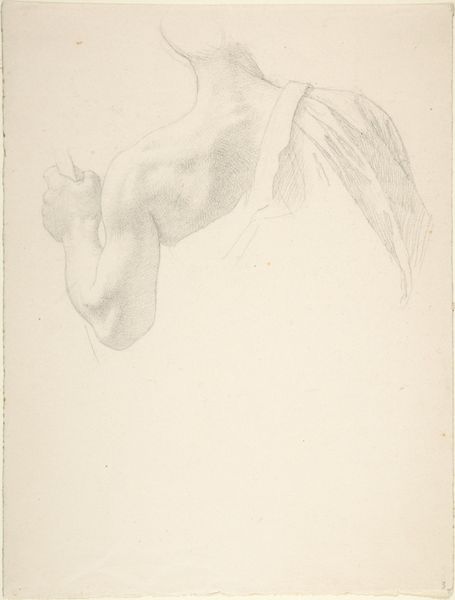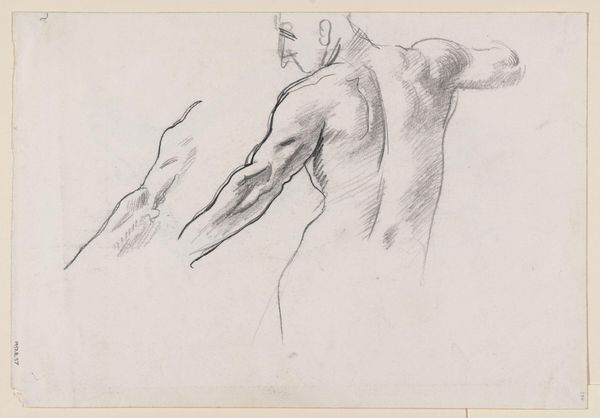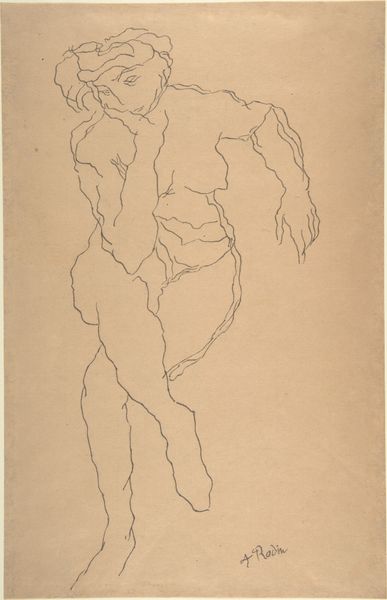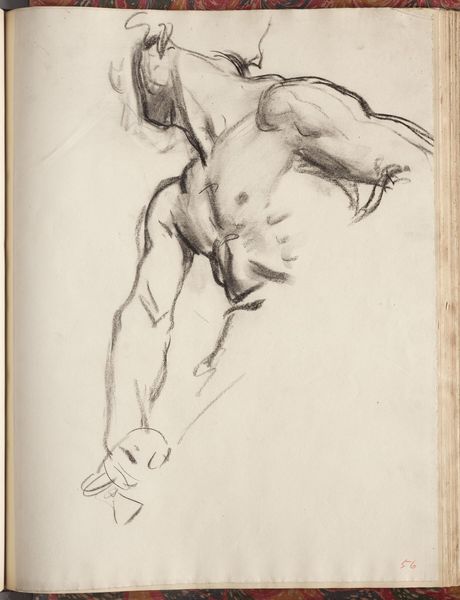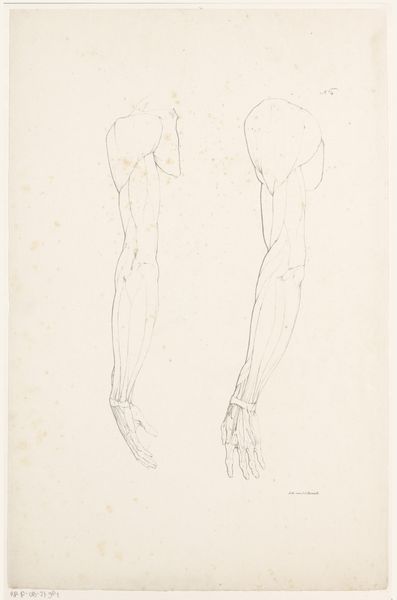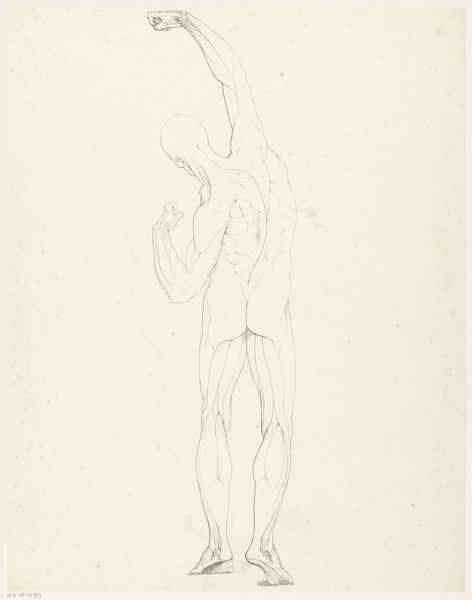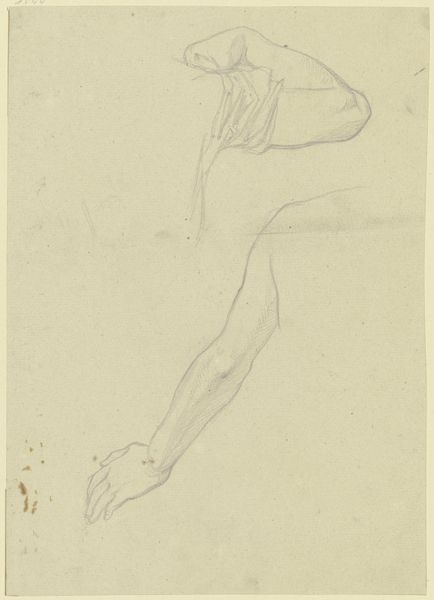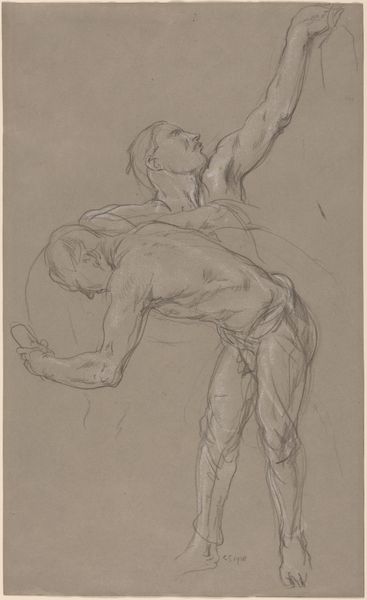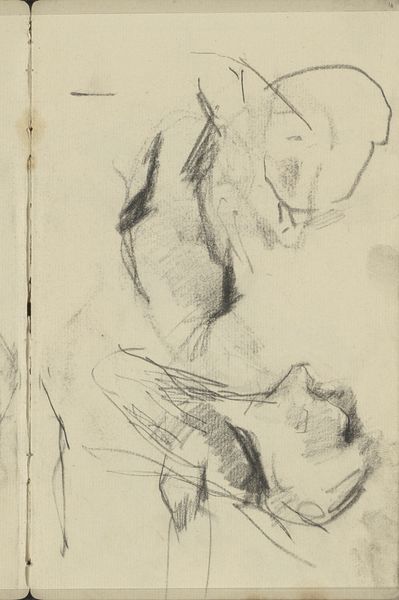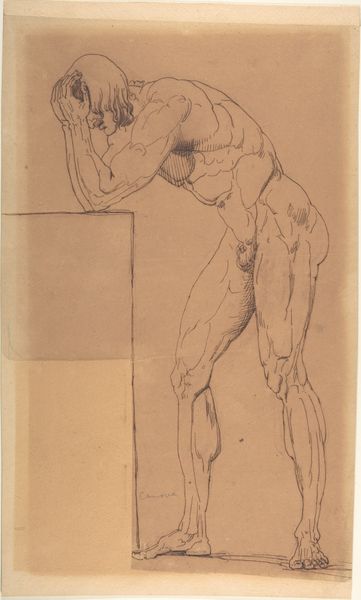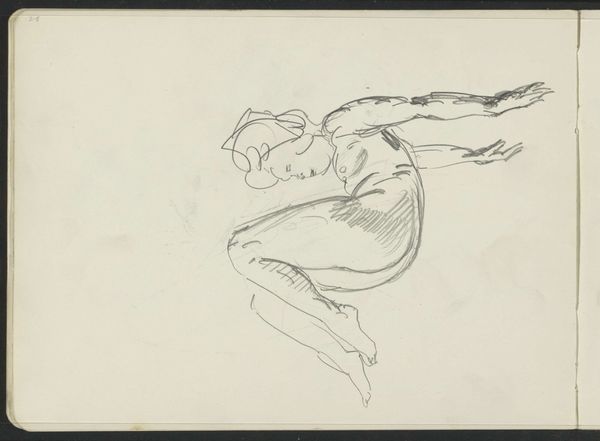
drawing, pencil
#
portrait
#
drawing
#
pencil sketch
#
figuration
#
pencil
#
academic-art
#
realism
#
arm
Dimensions: height 568 mm, width 404 mm
Copyright: Rijks Museum: Open Domain
Curator: A curious piece, isn’t it? This is "Anatomische studie van de spieren van een rechterarm," an anatomical study of the muscles of a right arm, crafted between 1874 and 1925 by Jan Veth. It's a pencil drawing currently housed here at the Rijksmuseum. Editor: Stark. Utilitarian, almost. The stark greyscale really strips the form to its essence. It's quite impactful, considering it's just a single limb on a plain background. Curator: It reflects the prevailing scientific interests of the late 19th and early 20th centuries. During this era, we witnessed significant exploration into how scientific, cultural, and political concepts intertwine with societal perspectives. Jan Veth likely saw an opportunity to visually examine and comprehend our knowledge of the human form. Editor: Yes, but note how the artist utilizes delicate gradations of shade. The composition directs the eye to linger on specific points—the tightening of the biceps, the flex in the wrist. Veth understood anatomy, undeniably, and expertly conveys the underlying structure through shadow and contour. Curator: Absolutely. But it transcends mere anatomical correctness, doesn't it? This representation resonates within the broader context of representing bodies within art. Considerations of power dynamics, labor, and the idealization of certain body types come to mind. Who does this representation serve? What implicit narratives does it support regarding strength, ability, and perhaps even masculinity? Editor: I see your point about the possible social underpinnings. But ultimately, this study showcases pure, confident draughtsmanship. It's a masterclass in capturing form with minimal means. The cross-hatching to render musculature; a testament to acute observation. Curator: I concur about the skills in this drawing, of course. Ultimately, by critically situating Veth’s artwork within its temporal and societal milieus, we are invited to question normative representations of the body and its meanings. Editor: Well, it reminds us that even an ostensibly objective study, viewed through the lens of formal execution, can offer profound visual satisfaction. Curator: Indeed. Art acts as both mirror and prism, reflecting and refracting the world around us.
Comments
No comments
Be the first to comment and join the conversation on the ultimate creative platform.

